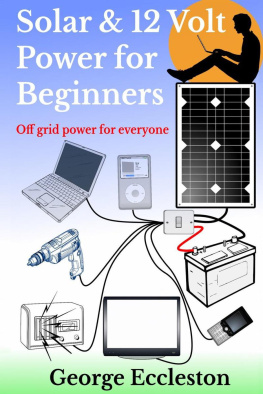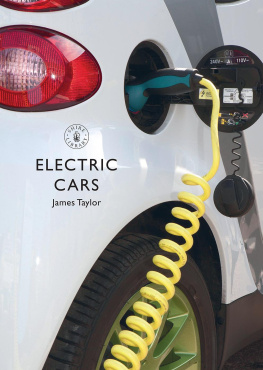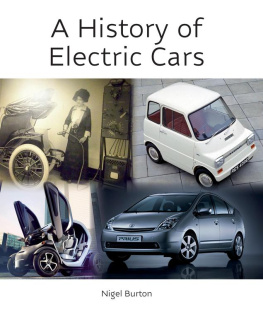
CHEVROLET
VOLT
CHARGING INTO THE FUTURE
LARRY EDSALL


CONTENTS
CHAPTER 10: Driven to Be So Extraordinary
That Its Downright and Delightfully Ordinary

FOREWORD BY BOB LUTZ
EVER SINCE WE INTRODUCED THE CHEVROLET VOLT CONCEPT CAR AT THE NORTH AMERICAN INTERNATIONAL AUTO SHOW IN DETROIT IN JANUARY 2007, IVE BEEN SAYING THAT THE VOLT PROGRAM IS THE MOST EXCITING PROJECT IVE BEEN INVOLVED WITH IN MY ENTIRE CAREER IN THE AUTO BUSINESS. I KNEW IT WOULD BEEVEN BEFORE THAT DAYAND I STILL FEEL THAT WAY TODAY, NOW THAT THE VOLT IS READY TO HIT AMERICAN ROADS.
In the aftermath of that introduction, Volt faced a lot of criticism. It was called vaporware by some members of the media. Executives from some other manufacturers told the press that the battery technology wouldnt workmany of those same companies eventually climbed aboard the lithium-ion bandwagon. GM was even accused of using the Volt as nothing but a PR stunt to greenwash its image. When we introduced the production version of the car in September 2008, Volt critics finally had to accept that the car was real and was headed to showrooms and streets.
The Volt means a lot to GM and to the industry on a variety of levels. First of all, this is solid technology that is going to be proven reliable. Its a practical way that we can electrify the automobile and drastically reduce our dependency on imported petroleum. Its also important to GM to help reinforce and continue its proud history of technological innovation, and to help restore the image of leadership that accompanied that history.
In terms of the impact of the Volt on the automobile industry, I think youll see lithium-ion technology continue to evolve and be used by the rest of the industry. And as for society in general, I think it can have an enormous benefit. Nearly 80 percent of Americans drive 40 miles a day or less. That means that nearly 80 percent of Americans can commute powered by electricity from the grid, never using a drop of gas.
When we achieve substantial production, and if our competitors do as well and the public takes to this new way of drivingand theres no doubt in my mind they willwe will drastically reduce gasoline and diesel consumption and our dependency on oil. So I think its very hard to overestimate the importance of the Volt for GM, for the industry, and for automotive transportation as a whole.
With the Volts appearance on the road now imminent, this book presents an excellent chronicling of exactly how it all happened. GM was extremely transparent in the development of the vehicle, as we promised we would be, and all of those details and more are captured here. For once the old show-biz line, We hope you enjoy it as much as we enjoyed bringing it to you, isnt a clich. From where I sit, its the unvarnished truth.

INTRODUCTION
ON JANUARY 7, 2007, I WAS AMONG HUNDREDS OF AUTOMOTIVE JOURNALISTS WHO GATHERED AT THE GENERAL MOTORS DISPLAY AT THE NORTH AMERICAN INTERNATIONAL AUTO SHOW IN THE DOWNTOWN DETROIT AREA FOR THE UNVEILING OF WHAT WE WERE TOLD WASNT JUST ANOTHER CONCEPT CAR, BUT A VEHICLE THAT WOULD INTRODUCE US TO GAME-CHANGING AUTOMOTIVE PROPULSION TECHNOLOGY.
When the cars cover was removed, I remember thinking I really didnt care what sort of power source might be inside this compact sedan. I liked the cars design and hoped it would find its way to the road as quickly as possible.
But the big news wasnt the package, it was the powertrain. This stunning vehicle was designed to showcase a technology that General Motors promised would be a significant step in weaning America and its motorists from their dependence on imported oil.
At this point my auto writers DEW system went to full alert. You remember the DEW line: The Defense Early Warning technology was a Cold War creation designed to alert the United States to a missile attack from the Soviet Union. Well, Id developed my own alert with regard to technology promises from General Motors.
Early in my automotive reporting career, Id walked around the Detroit show with a since-retired engineer who for many years had led General Motors engineering research and vehicle development efforts. An overseas automaker would be unveiling, say, computerized vehicle dynamic control technology or a hybrid powertrain that greatly enhanced fuel economy by linking electric motors and batteries with the usual internal combustion engine.

We did that years ago, the GM engineering executive would say.
But what good, I wondered, was creating a technology if you were tardy in bringing it to the road-going marketplace?
In ensuing years, Id hear GM unveil, say, a car with a skateboardlike chassis that supposedly could carry any sort of body configurationpickup truck by day and luxury sedan by night, for exampleor maybe it was the promise that nonpolluting fuel cell powertrains were just around the next corner, Really, theyll be here any day now, and Id learned to dismiss such whiz-bang claims as auto show promises that would remain unfulfilled.
But when the Volt was unveiled, I heard something Id never heard before from General Motors executives. They said that while the technological theory was sound, the lithium-ion batteries needed to make the Volt a viable vehicle were yet to be developed.
The concept behind the Volt was not to use an internal combustion engine that constantly consumed imported petroleum nor a hybrid powertrain that could get the car underway on battery power but to actually use a battery pack to do all the driving. That battery pack would be plugged into the electrical grid for overnight charging and would propel the Volt up to 40 miles.
Now remember that when this concept was being unveiled, General Motors was being held up to cinematic scorn for being the company responsible for killing the electric car. Except what killed the electric vehicle wasnt General Motors but range anxiety. Drive a traditional car and you might get nervous as you watch the distance to empty number on the dashboard display drop lower and lower. Nonetheless, you could take comfort in the fact that, most likely, you would find a gas station within the next few blocks or at the next exit. Not so with an electric vehicle. Even if you found a proper electrical outlet and plug, it would take hours, not minutes, to recharge the batteries.
But this Volt eliminated range anxiety because it came with its own battery rechargera small internal combustion engine that had no mechanical connection to the cars drive wheels but would run to generate electricity to maintain the battery packs charge so the car could drive not just tens but hundreds of miles.
At least that was the concept. There was one problem, according to General Motors executivesthe lithium-ion batteries needed for such a vehicle did not exist.
Next page














